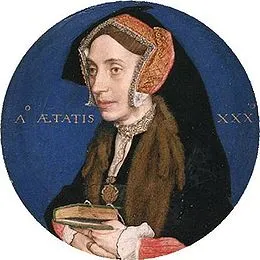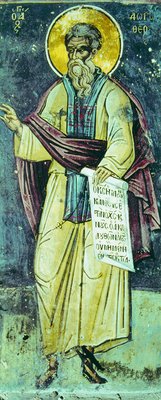Source: https://www.historyskills.com
Nero’s persecution of Christians was a significant turning point in the early history of Christianity, and it had a profound impact on the development of the religion.
Growth of early Christianity
The spread of Christianity in the centuries leading up to Nero's persecution was a gradual process that was marked by both success and opposition.
Christianity began as a small sect within Judaism in the first century CE and gradually expanded beyond its Jewish roots to encompass a diverse group of believers from all walks of life.
One of the key factors in the spread of Christianity was the work of the apostles, including Peter and Paul, who traveled extensively throughout the Mediterranean world to spread the message of Jesus Christ. These early missionaries established new communities of believers and wrote letters and other works that helped to define and spread the teachings of Christianity.
Another important factor in the spread of Christianity was its message of hope and salvation. At a time when many people in the Roman Empire were openly incorporating more foreign gods into their religious system, Christianity offered an attractive vision of a better world based on love, compassion, and equality.
Why did Nero target Christians?
The motivations behind Nero's persecution of Christians are complex and multifaceted. There is no one single reason for Nero's hostility towards Christians, but rather a combination of political, social, and religious factors that contributed to his actions.
One possible motivation for Nero's persecution of Christians was political. Nero was known for his authoritarian rule and was often at odds with various groups in Roman society, including the Senate, the military, and the Jewish population. Christianity was seen as a threat to the established order, as it rejected the traditional Roman gods and did not recognize the authority of the emperor. By persecuting Christians, Nero may have been seeking to assert his power and authority over a group that he saw as a potential source of dissent and rebellion.
Another possible motivation for Nero's persecution of Christians was social. Christianity was a new and growing religion in the Roman Empire, and it challenged traditional social hierarchies by promoting the idea of equality and brotherhood among all believers, regardless of social status or background. This may have been seen as a threat by some members of Roman society, particularly those in positions of power and influence.
Religious factors may have also played a role in Nero's persecution of Christians. The Roman Empire was a polytheistic society, and the worship of traditional gods was seen as essential to maintaining the favor of the gods and ensuring the stability of the state. Christianity, with its rejection of the traditional gods and promotion of monotheism, was seen as a direct threat to the religious and cultural identity of the Roman Empire.
Nero's cruel punishments for Christians
The persecution of Christians by Nero began in the year 64 CE, after a great fire swept through Rome, destroying much of the city. According to the Roman historian Tacitus, Nero himself may have been responsible for starting the fire, although this claim is disputed by some scholars. In any case, Nero was eager to deflect blame for the disaster, and he seized upon the growing Christian community as a convenient scapegoat. The persecution of Christians under Nero was marked by extreme brutality and cruelty, and some of the most horrific methods of execution were reserved for those who refused to renounce their faith. Nero preferred to publicly execute those who refused to renounce their faith, either in events he'd personally organised, or at regular state-sponsored times. At times, Christians were pitted against savage animals, such as dogs, in a gruesome display of violence and bloodshed. At others, victims were crucified. Another particularly gruesome form of execution was to burn Christians alive as human torches.
Nero was known for his extravagant gardens, which he would light up at night with burning torches. According to some accounts, Nero would have Christians tied to stakes and covered in tar or pitch before setting them alight. The burning bodies would then be used to light up the gardens, creating a macabre spectacle for Nero's guests.
The deaths of the apostles Peter and Paul
The persecution of Christians was not confined to Rome alone, but spread throughout the empire. According to Christian tradition, the apostles Peter and Paul were both martyred during Nero’s reign.
Peter, also known as Simon Peter, was one of Jesus' twelve apostles and is often considered to be the first pope of the Catholic Church. According to tradition, Peter was crucified upside-down during Nero's persecution of Christians. The reason for this unusual form of execution was reportedly at Peter's own request, as he felt unworthy to die in the same manner as Jesus. The site of Peter's martyrdom is believed to be the Vatican Hill, where a basilica now stands in his honor. In the fourth century, the emperor Constantine built the original St. Peter's Basilica on the site, which was later replaced by the current basilica in the 16th century.
The second famous victim of Nero's persecution was Paul, also known as Saint Paul. He was a prominent Christian missionary and writer who is credited with spreading Christianity throughout the Mediterranean world. According to tradition, Paul was beheaded during Nero's persecution of Christians, likely sometime between 64 and 67 CE.
What impact did the persecution have?
Despite the severity of Nero’s persecution, Christianity continued to grow and spread throughout the Roman Empire in the centuries that followed. The martyrdom of Christians during Nero’s reign became a rallying cry for the faithful, inspiring new converts and strengthening the resolve of those who already believed. The stories of the martyrs were passed down through the generations, becoming a powerful symbol of faith and sacrifice. In the end, Nero’s persecution of Christians failed to stamp out the religion, but instead helped to cement its place in the history of the Western world. Today, Christianity is the largest religion in the world, with over 2 billion followers, and its influence can be seen in everything from art and literature to politics and philosophy.






.jpg)





